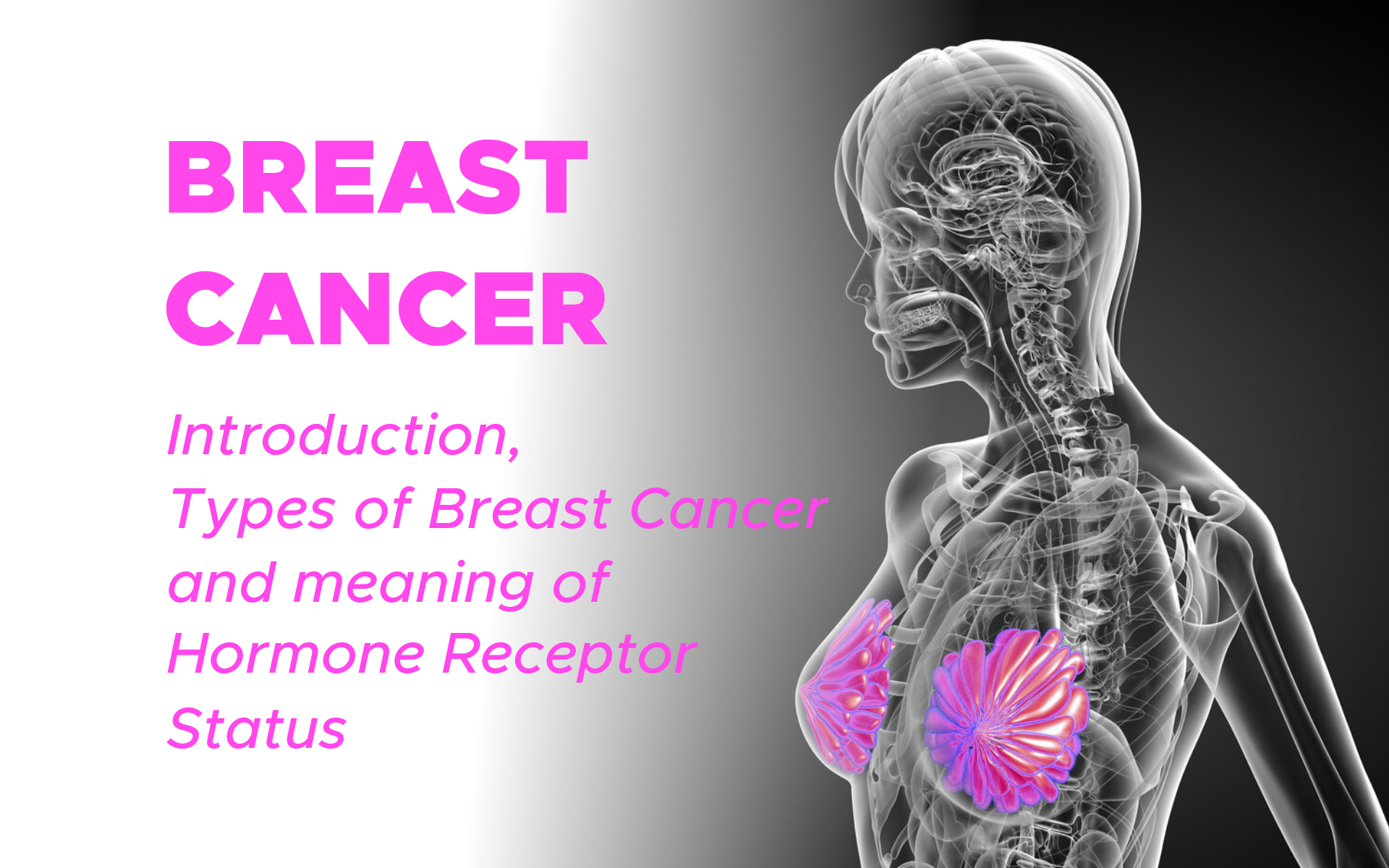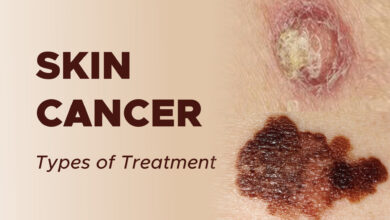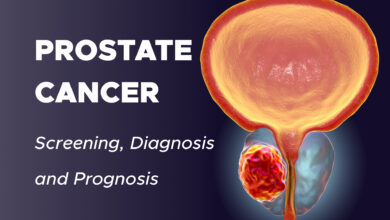
Breast Cancer
Introduction: Types of breast cancer and meaning of hormone receptor positive, HER2 positive and triple negative.
About the Breast
The breast is made up of different tissue, ranging from very fatty tissue to very dense tissue. Within this tissue is a network of lobes. Each lobe is made up of tiny, tube-like structures called lobules that contain milk glands.
Tiny ducts connect the glands, lobules, and lobes, carrying milk from the lobes to the nipple. The nipple is located in the middle of the areola, which is the darker area that surrounds the nipple. Blood and lymph vessels also run throughout the breast.
Blood nourishes the cells. The lymph system drains bodily waste products. The lymph vessels connect to lymph nodes, the small, bean-shaped organs that help fight infection. Groups of lymph nodes are located in different areas throughout the body, such as in the neck, groin, and abdomen.
Regional lymph nodes of the breast are those nearby the breast, such as the lymph nodes under the arm.
About Breast Cancer
Cancer begins when healthy cells in the breast change and grow out of control, forming a mass or sheet of cells called a tumor. A tumor can be cancerous or benign.
A cancerous tumor is malignant, meaning it can grow and spread to other parts of the body. A benign tumor means the tumor can grow but will not spread.
Breast cancer spreads when the cancer grows into adjacent organs or other parts of the body or when breast cancer cells move to other parts of the body through the blood vessels and/or lymph vessels. This is called a metastasis.
This guide covers both non-invasive (stage 0) as well as early-stage and locally advanced invasive breast cancer, which includes stages I, II, and III. The stage of breast cancer describes how much the cancer has grown, and if or where it has spread.
Although breast cancer most commonly spreads to nearby lymph nodes, it can also spread further through the body to areas such as the bones, lungs, liver, and brain. This is called metastatic or stage IV breast cancer and is the most advanced type of breast cancer.
However, the involvement of lymph nodes alone is generally not stage IV breast cancer. Learn more about metastatic breast cancer in a separate section on this website.
If breast cancer comes back after initial treatment, it can recur locally, meaning in the same breast and/or regional lymph nodes. It can also recur elsewhere in the body, called a distant recurrence or metastatic recurrence.
Types of Breast Cancer
Breast cancer can be invasive or non-invasive. Invasive breast cancer is cancer that spreads into surrounding tissues and/or distant organs.
Non-invasive breast cancer does not go beyond the milk ducts or lobules in the breast. Most breast cancers start in the ducts or lobes and are called ductal carcinoma or lobular carcinoma:
1. Ductal Carcinoma:
These cancers start in the cells lining the milk ducts and make up the majority of breast cancers.
- Ductal Carcinoma in Situ (DCIS).This is a non-invasive cancer that is located only in the duct and has not spread outside the duct.
- Invasive or Infiltrating Ductal Carcinoma.This is cancer that has spread outside of the duct.
2. Invasive Lobular Carcinoma:
This is cancer that started in the lobules and has spread outside of the lobules.
Less Common Types of Breast Cancer Include:
3. Medullary
4. Mucinous
5. Tubular
6. Metaplastic
7. Papillary
8. Inflammatory Breast Cancer is an aggressive type of cancer that accounts for about 1% to 5% of all breast cancers.
Paget’s disease is a type of cancer that begins in the ducts of the nipple. Although it is usually non-invasive, it can also be an invasive cancer.
Breast Cancer Subtypes
There are 3 main subtypes of breast cancer that are determined by doing specific tests on a sample of the tumor. These tests will help your doctor learn more about your cancer and recommend the most effective treatment plan.
Testing the tumor sample can find out if the cancer is:
Hormone Receptor Positive:
Breast cancers expressing Estrogen Receptors (ER) and/or Progesterone Receptors (PR) are called “hormone receptor positive.” These receptors are proteins found in cells.
Tumors that have estrogen receptors are called “ER positive.” Tumors that have progesterone receptors are called “PR positive.” Only 1 of these receptors needs to be positive for a cancer to be called hormone receptor positive.
This type of cancer may depend on the hormones estrogen and/or progesterone to grow. Hormone receptor-positive cancers can occur at any age, but are more common in women who have gone through menopause.
About two-thirds of breast cancers have estrogen and/or progesterone receptors.
Cancers without these receptors are called “hormone receptor negative.”
HER2 Positive:
About 20% of breast cancers depend on the gene called human epidermal growth factor receptor 2 (HER2) to grow. These cancers are called “HER2 positive” and have many copies of the HER2 gene or high levels of the HER2 protein.
These proteins are also called “receptors.” The HER2 gene makes the HER2 protein, which is found on the cancer cells and is important for tumor cell growth. HER2-positive breast cancers grow more quickly.
They can also be either hormone receptor positive or hormone receptor negative. Cancers that have no or low levels of the HER2 protein and/or few copies of the HER2 gene are called “HER2 negative.”
Triple Negative:
If a tumor does not express ER, PR, and HER2, the tumor is called “triple negative.” Triple-negative breast cancer makes up about 15% of invasive breast cancers.
Triple-negative breast cancer seems to be more common among younger women, particularly younger Black and Hispanic women. Triple-negative breast cancer is also more common in women with a mutation in the BRCA1 gene.
Experts recommend that all people with triple-negative breast cancer younger than 60 be tested for BRCA gene mutations.




